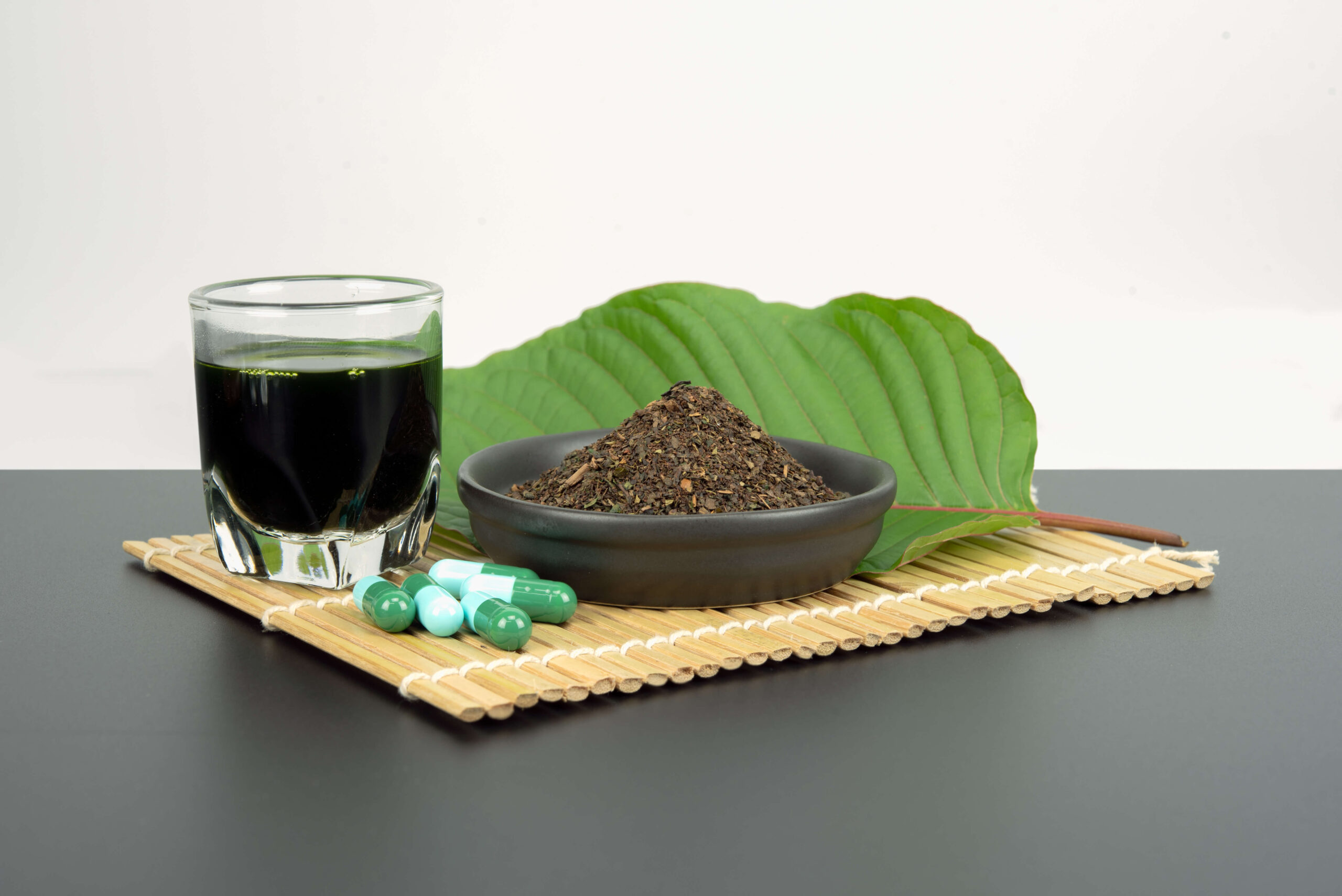Top 5 Dangers of Kratom Abuse
Even though kratom has a reputation as “safe and natural,” it is actually very dangerous. A few of the risks of using kratom include overdose, deadly drug interactions, and a variety of possible health risks due to contamination. We take a detailed look at each of the top five dangers of kratom use below.
We’ve seen a large uptick in clients admitting to our drug rehab in Atlanta, GA with serious kratom addictions. Make no mistake, this is a very dangerous drug. If you or someone you know is ready to get help, we highly recommend reading our 3 step guide to finding the best rehab.

Kratom Danger #1 – Overdoses
Contrary to popular belief, it is possible to overdose on kratom. Terms used to describe kratom, such as “all-natural” or “herbal,” mask the nature of the active ingredients which produce effects similar to stimulants and opioids depending on the dose consumed. While the neurotoxic or fatal doses have not been firmly established in humans, there are confirmed reports of fatalities where kratom was the only drug present in the body.
With kratom use in the United States on the rise, there has also been a significant increase in the incidence of overdoses. Between 2011 and 2017 in the United States, there were 1,807 cases of Kratom exposure which had been called into Poison Control Centers. Of these, 65% were reported between 2016 and 2017. This indicates the use rates spiked drastically during this time.
31.8% of these cases resulted in admission to a hospital. 51.9% resulted in serious medical consequences. From these particular cases, nine deaths have involved kratom and other drugs. Two deaths resulted from kratom use alone. These two deaths are not the only ones as there have been dozens of deaths in the US that involved kratom.
Kratom Danger #2 – Serious Health Risks
While kratom is rumored to be harmless, there are a number of serious risks associated with regular use. The exact causes of the dangers of kratom use are not well understood. It is clear, however, that kratom poses a threat to several vital organs, particularly the liver, kidneys, heart, and brain. These risks include, but are not limited to:
- Intrahepatic Cholestasis. A type of acute liver damage that is most commonly seen during pregnancy. It results from a blockage or backup of bile in the liver which impairs function. Symptoms include jaundice (yellow of the skin or whites of eyes), severe itching, very dark urine, pale or gray stool, and pain in the upper right abdomen.
- Drug Induced Liver Injury. A spectrum of different types of acute liver damage caused by drug use. The specific symptoms can be diverse depending on the drug in question. In the case of kratom, cholestasis is the main outcome observed. The National Institutes of Health have given kratom a Hepatotoxicity Score B, which they define as “likely cause of clinically apparent liver injury.”
- Hyperbilirubinemia. Results from an underlying condition (such as hepatic cholestasis). It is the result of too much bilirubin in the blood due to poor liver function. This can cause jaundice, decreased appetite, and lethargy.
- Tonic-Clonic (Grand Mal) Seizure. These types of seizures are characterized by a loss of consciousness and powerful muscle contractions, which may sometimes be violent. The exact way that kratom can cause seizures is unknown, but there is a correlation between the two.
- Posterior Reversible Encephalopathy Syndrome (PRES). Typically drug-induced (from methamphetamines). This can result in a severe headache, disorientation, visual disturbances, and aphasia (inability to generate or understand speech). It can be due to vasogenic edema, which is a buildup of fluid between brain cells that leads to many different problems depending on where in the brain it occurs.
- Brain Lesions / Focal Epilepsy. The exact causes are unknown, but recurring petit mal and grand mal seizures have been attributed to kratom use. Petit mal seizures are characterized by sudden disorientation and brief loss of consciousness. Grand mal involves a loss of consciousness and sometimes violent muscle contractions.
- Tachycardia. Increased heart rate and blood pressure. There are several different types of tachycardia, some more dangerous than others. All types can increase the risk of stroke or heart failure. Symptoms include feeling dizzy or lightheaded, heart palpitations, shortness of breath, or chest pain.
- Torsades de Pointes. A distinct form of tachycardia, it presents with a very recognizable ECG signature. May lead to ventricular fibrillation, which is life threatening.

Kratom Danger #3 – Dangerous Drug Interactions
There are many potential drug-drug interactions that may occur with kratom. While there have not yet been any studies done on drug-drug interactions in humans, there are many cases where death or serious side effects occurred when kratom was used alongside other drugs. The exact interactions which may have occurred are unclear, but the results are not desirable. Some of these potential drug interactions include, but are not limited to:
- Zopiclone (Zimovane), Citalopram (Celexa), Lamotrigine (Lamictal): Used in tandem with kratom which resulted in a fatality. Blood levels of the three other drugs were well within the therapeutic range, indicating no abuse was occurring. The post-mortem levels of kratom metabolites were quite high, indicating heavy use.
- Vyvanse: In this case, there was no history of epilepsy. After using kratom and Vyvanse together, the subject started having both tonic-clonic and absence seizures. Upon discontinuing kratom use, the seizures ceased.
- Seroquel & Adderall: The patient was presenting with multiple symptoms of PRES (see above) after tandem use of prescription medications and kratom. CT scan showed results consistent with vasogenic edema.
- Paxil & Lamictal: The subject was found unresponsive by his family after a T-C seizure at home. EMS were called but were unable to resuscitate. Subsequent autopsy revealed that he had suffered heart attack, pulmonary embolism, and brain hemorrhage before finally succumbing to hypoxia.
- Modafinil (Provigil): After use with kratom, the subject suffered a T-C seizure.
- Alcohol: Mixing kratom and alcohol can lead to many unforeseen complications.
Kratom Danger #4 – Lack of Legal Regulations
Kratom is currently still legal at a Federal level, but this has been a back-and-forth issue over the years. Beginning in 2014, the FDA posted several notices which made it illegal to import kratom as a dietary supplement (FDA Import Alert 54-15). Invoking the Federal Food, Drug, and Cosmetics Act – Adulteration, Section 402(f)(1)(B) the agency has claimed: “there is inadequate information to provide reasonable assurance that such ingredient (kratom) does not present a significant or unreasonable risk of illness or injury.” This led to three seizures of massive stockpiles of kratom products by US Marshals in 2014 and 2016 which were valued at over $5.5 million total.
The DEA and Department of Justice did attempt to include kratom as a Schedule 1 drug in 2016 with two separate proposed rules. This was met with a massive public backlash. The action was delayed pending further research. Several states have taken it into their hands to make kratom illegal, including Alabama, Arkansas, Indiana, Rhode Island, Vermont, and Wisconsin. It is illegal in these states to possess, purchase, or use kratom. There is also pending state-level legislation that, if unchallenged, will result in kratom becoming illegal or regulated in the near future. States with currently pending legislation include Michigan, Ohio, New York, New Jersey, Georgia, Mississippi, Missouri, and Kansas. Several other states have imposed age restrictions on kratom purchases. Several counties scattered throughout the country have made kratom possession illegal.
Kratom Danger #5 – Contamination
In 2018, there was a massive multi-state salmonella outbreak in which kratom was implicated. There were 199 reported infections in 41 states, and over 70 people were hospitalized. The FDA and CDC performed an investigation and traced the source to contaminated kratom powder, tablets, and tea with no common supplier or distributor identified.
Several companies that sold kratom products performed voluntary recalls. On April 2, 2018, the FDA ordered a mandatory recall of any Kratom products supplied by Triangle Pharmanaturals LLC. There were several different strains of salmonella found, including salmonella Javiana, Thompson, Okatie, Weltevreden, and Heidelberg.
Our Kratom Addiction Resources
We’re Here To Help
Get help now
We’d love the opportunity to help you during this overwhelming and difficult process. Our sincere passion is helping people recover so that they can live full, meaningful, and healthy lives.
Call us 24/7 at 770-299-1677 or fill out our contact form and a member of our admissions team will contact you shortly.


